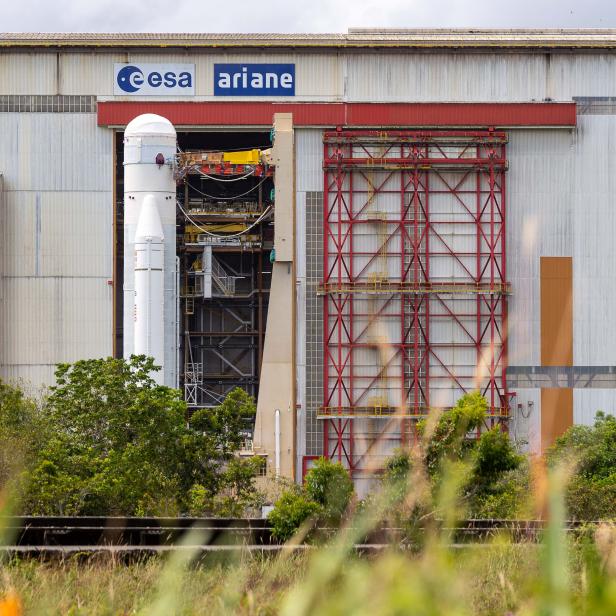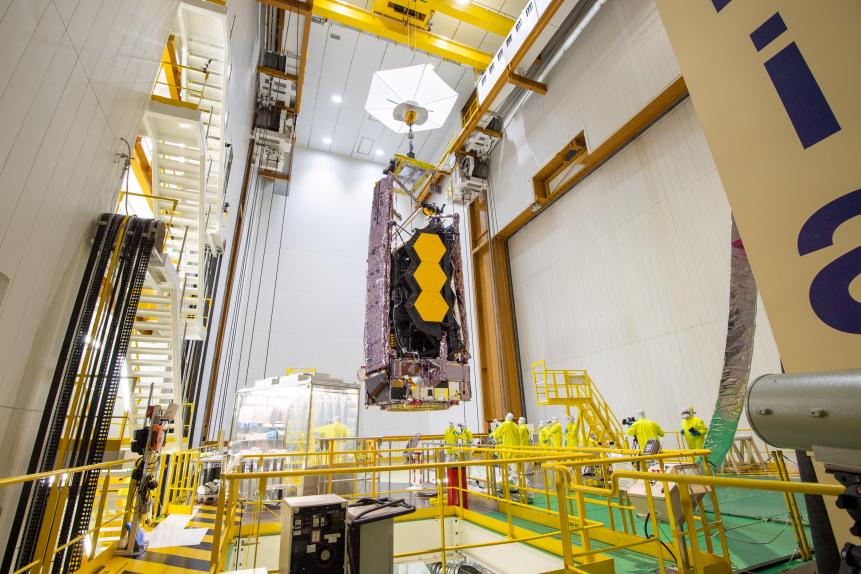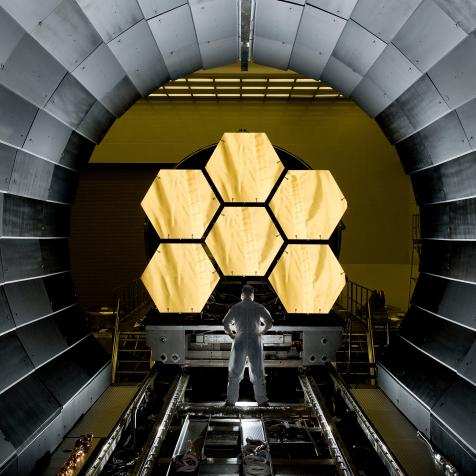
ESA/CNES/Arianespace
The James Webb Space Telescope Launches!

Finally! It was initially proposed way back in 1998 and named the James Webb Space Telescope in 2002. After a decade of delays and over 10 billion dollars past its original budget, NASA’s next great observatory finally launched from the European Space Agency’s Guiana Space Centre in South America.
Now is perhaps the most nail-biting part of the mission, called infamously the “30 days of terror”. The observatory is headed for a place in space called the second Lagrange point, or L2. Named after the French polymath who originally figured it out, L2 sits just under a million miles away from the Earth, on the opposite side of the sun. It’s a gravitational balance point, where the gravity of the Earth and the Sun cancel each other out. A handy place to park an observatory, since you don’t have to work very hard to keep it there.
The launch rocket itself won’t take the James Webb all the way to L2, however. It will only heave the observatory in its general direction. About 30 minutes after launch, the Webb’s own rockets will fire to get it pointed in the exact right direction.

ESA-M.Pedoussaut
On its way out to L2, the James Webb is going to undergo a radical transformation. It will deploy its solar array, its communications antenna, and its sunshield. The last part is a metallic cake 46 wide by 70 feet across, with each layer of the cake thinner than a strand of human hair. The point of the sunshield is to keep the observatory itself nice and chilly – it’s an infrared telescope, and any source of heat can ruin the observations.
Did I mention that deploying the sunshield involves a complicated dance of over 7,000 parts? Yeah.
In the final stage of its journey, just before it reaches its station at L2, the James Webb will perform its final act, unfolding its massive primary mirror. That mirror is so big that it can’t fit into a rocket the normal way, and is instead made of 18 different segments that have to slide into place in just the right way.

ESA-M.Pedoussaut
On Saturday, Dec. 11, NASA’s James Webb Space Telescope was secured on top of the Ariane 5 rocket that will launch it to space from Europe’s Spaceport in French Guiana.
If something goes wrong, we can’t fix it. Unlike the (in)famous space shuttle mission to repair the Hubble Space Telescope, we don’t have the ability to send a crew this far away from the Earth on a service call. Hence the terror.
If everything goes well, the James Webb can then begin commissioning, which is the process of testing and calibrating all of its scientific instruments. After a few months of that, the real science can begin.
Fingers crossed.
Learn More about the Universe
Journey Through the Cosmos in an All-New Season of How the Universe Works
The new season premieres on Science Channel and streams on discovery+.




















